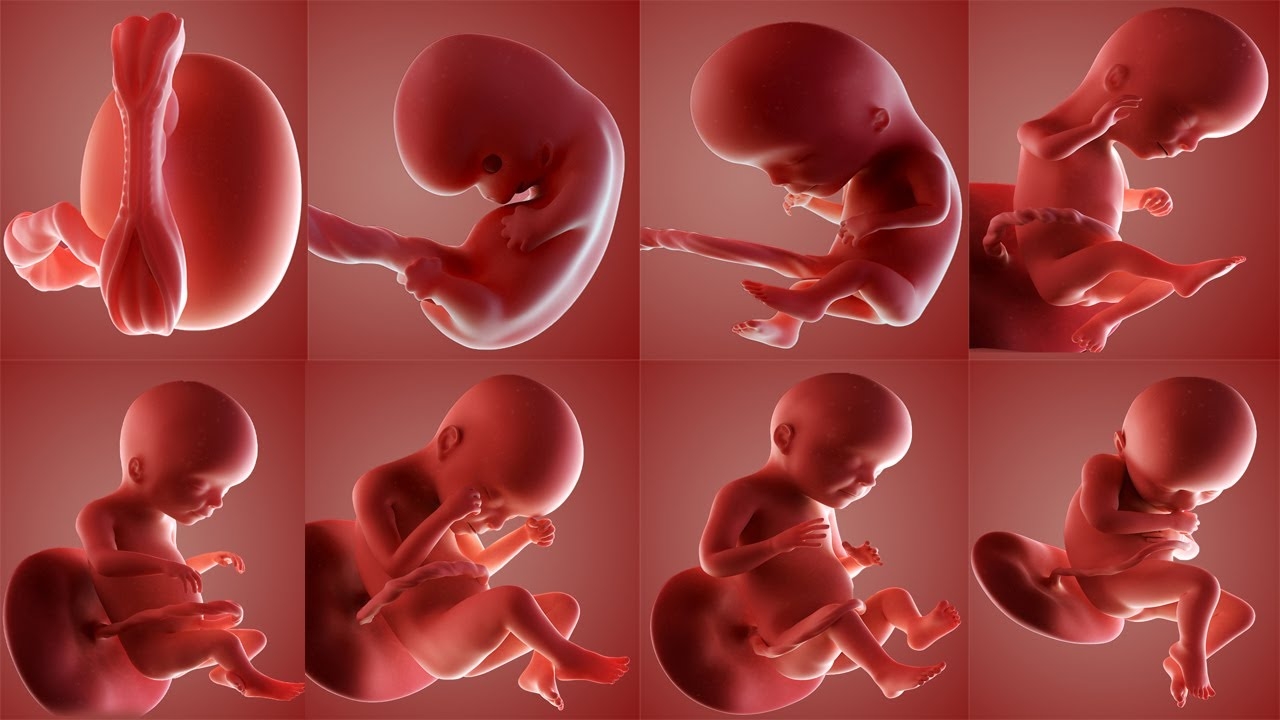Pregnancy is an exciting journey for every woman. It’s a time filled with anticipation, wonder, and growth. From the first week of conception to the moment of birth, a tiny human is growing and developing inside the womb. With modern technology, it’s now possible to take a peek at the 3D development of a baby week by week. Let’s take a closer look at what happens during each phase of pregnancy.
Table of Contents
Weeks 1-4: Conception to Implantation

The first week of pregnancy is counted from the first day of your last menstrual period. During these early stages, the fertilized egg divides into multiple cells as it travels down the fallopian tube towards the uterus. By the end of the fourth week, the embryo has implanted itself into the uterine wall and starts to form the placenta.
Weeks 5-8: The Embryonic Period
During this period, the embryo starts to grow rapidly and develop major organs such as the heart, brain, and lungs. By the end of the eighth week, the embryo is now considered a fetus, and all major organs have formed.
Weeks 9-12: The Fetal Period
This is the period when the fetus starts to look more like a baby. It grows to around 2.5 inches in length and starts to develop reflexes such as swallowing and sucking. By the end of the twelfth week, the fetus can smile, frown, and even make a fist.
Weeks 13-16: Growing and Developing
During this period, the fetus starts to gain weight, and its body begins to catch up with its head. It’s now growing hair, eyebrows, and eyelashes. The fetus can now hear and react to sound, and its skin becomes less transparent.
Weeks 17-20: The Mid-Pregnancy Milestone
By week 20, the fetus is around 6.5 inches long and weighs about 10 ounces. During this period, the mother can feel the baby’s movements, and the fetus can now swallow, digest food, and pass urine.
Weeks 21-24: Developing Senses and Awareness
The fetus’s senses continue to develop during this period. It can now taste, and its sense of touch is developing. Its heart rate is getting stronger, and it’s developing a better sense of balance.
Weeks 25-28: Preparing for Life Outside the Womb
During this period, the fetus’s lungs are developing, and it’s practicing breathing movements. It’s also gaining weight and developing a layer of fat that will help regulate its body temperature after birth.
Weeks 29-32: Growth Spurt
During this period, the fetus is growing rapidly and gaining more weight. It’s now around 15 inches long and weighs around 3.5 pounds. Its bones are getting harder, and its brain is developing at a rapid pace.
Weeks 33-36: Getting Ready for Birth
During these final weeks, the fetus is preparing for birth. It’s positioning itself head-down and developing a layer of vernix on its skin that will protect it during birth. Its lungs are now mature enough to function on their own.
Weeks 37-40: Full-Term Pregnancy
At this point, the baby is ready to be born. It’s now around 19-21 inches long and weighs around 6-9 pounds. The baby’s organs are fully developed and ready for life outside the womb.
In conclusion, pregnancy is an incredible journey that results in the birth of a beautiful baby. Understanding the 3D development of a baby week by week can help parents-to-be appreciate the incredible changes that are happening inside the womb. Each week is a milestone that brings the baby closer to birth, and it’s an exciting time for everyone involved.
Frequently Asked Questions
Q. Is it safe to have a 3D ultrasound during pregnancy?
A. Yes, 3D ultrasounds are safe during pregnancy. However, it’s important to only have them done by a trained medical professional.
Q. Can you tell the gender of the baby from a 3D ultrasound?
A. Yes, in most cases, you can tell the gender of the baby from a 3D ultrasound after around 16 weeks of pregnancy. However, it’s not always 100% accurate.
Q. How often should I have an ultrasound during pregnancy?
A. The number of ultrasounds you have during pregnancy will depend on your individual circumstances. Most women have at least two ultrasounds during pregnancy, one in the first trimester and one in the second trimester.
Q. Can a 3D ultrasound detect birth defects?
A. In some cases, a 3D ultrasound can detect birth defects, but it’s not always possible. A diagnostic test such as chorionic villus sampling (CVS) or amniocentesis may be required for a definitive diagnosis.
Q. What is the difference between a 3D and 4D ultrasound?
A. A 3D ultrasound creates a still image of the baby, while a 4D ultrasound creates a moving image of the baby in real-time. Both types of ultrasounds use the same technology but produce different types of images.
